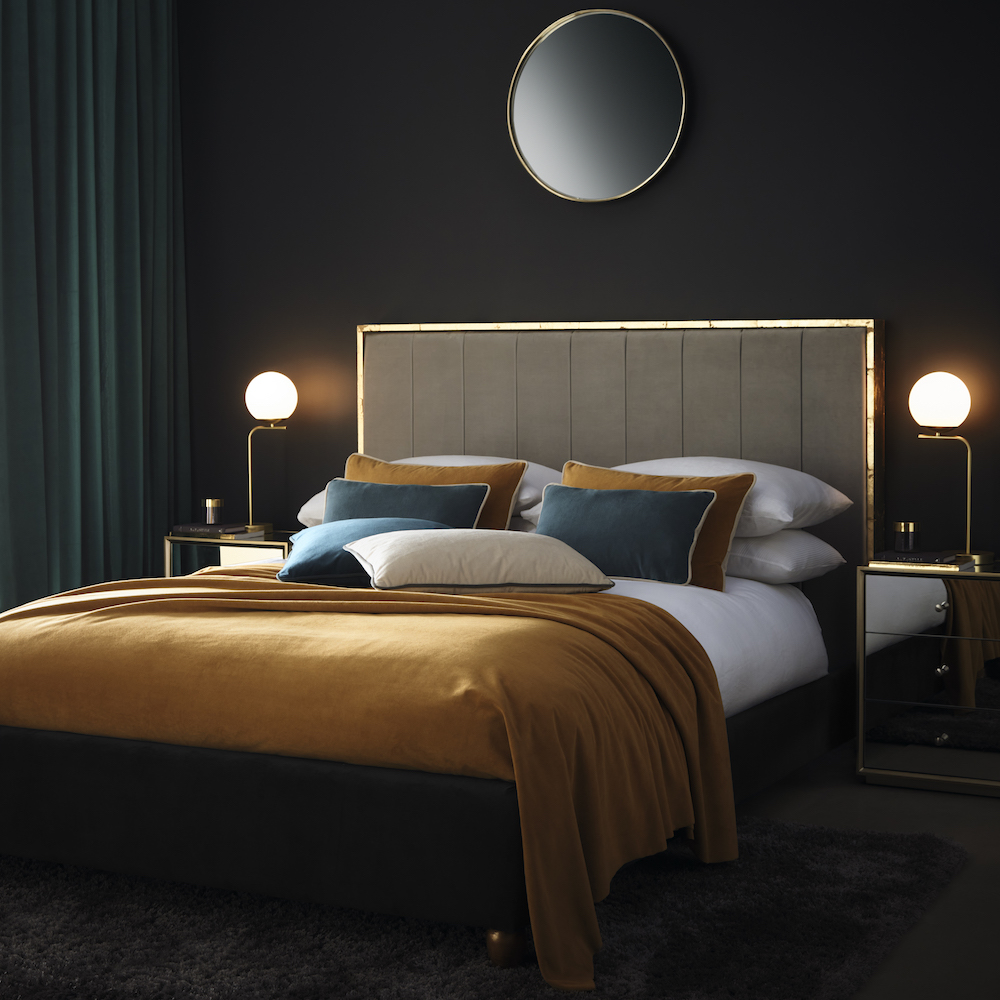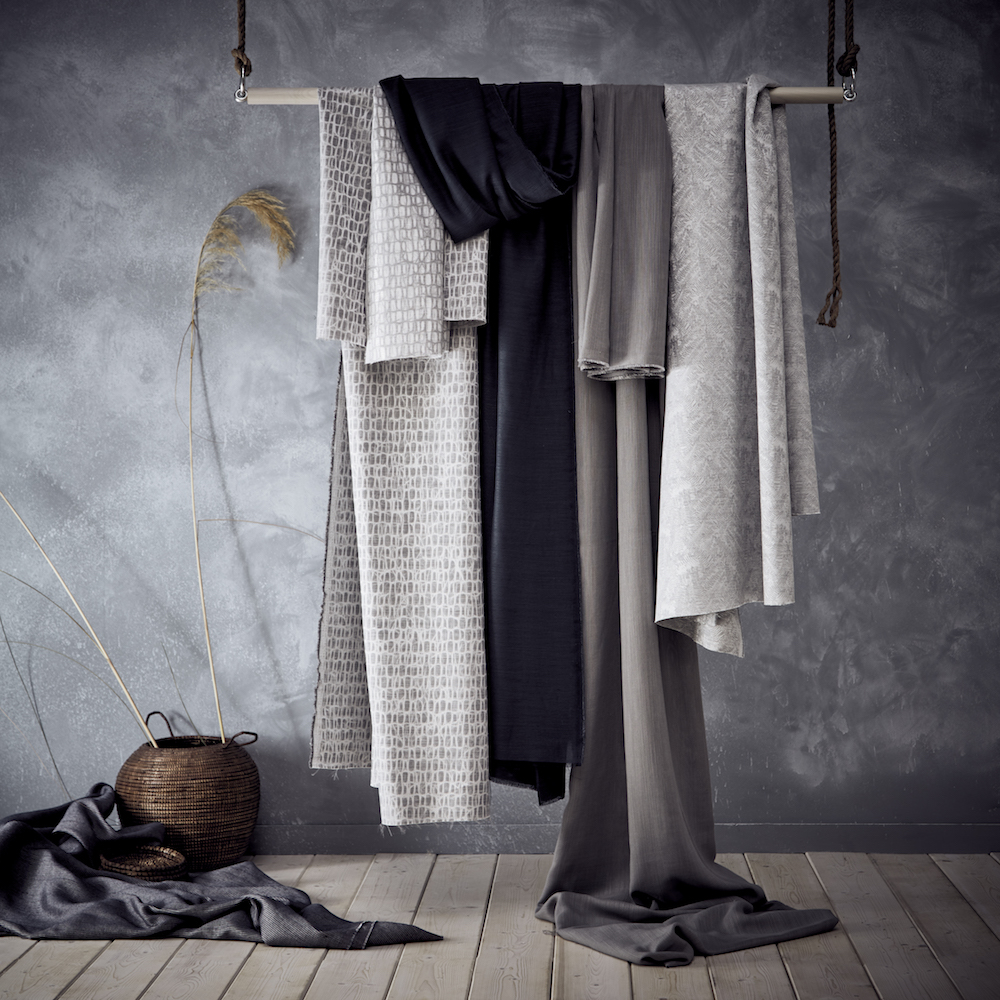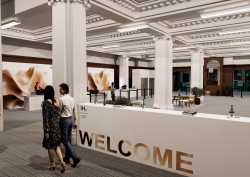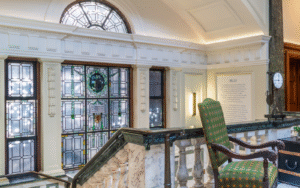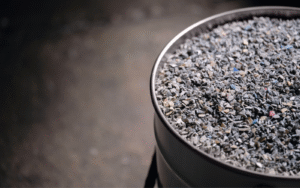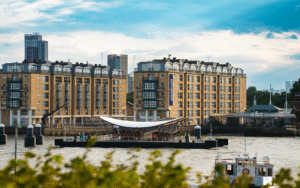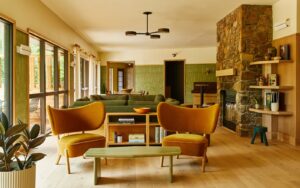With the aim to understand how Sanderson Design Group will go carbon-zero by 2030, Editor Hamish Kilburn headed up to Lancaster, to the printing factory of Standfast Barracks, to explore how the group is keeping British manufacturing alive…
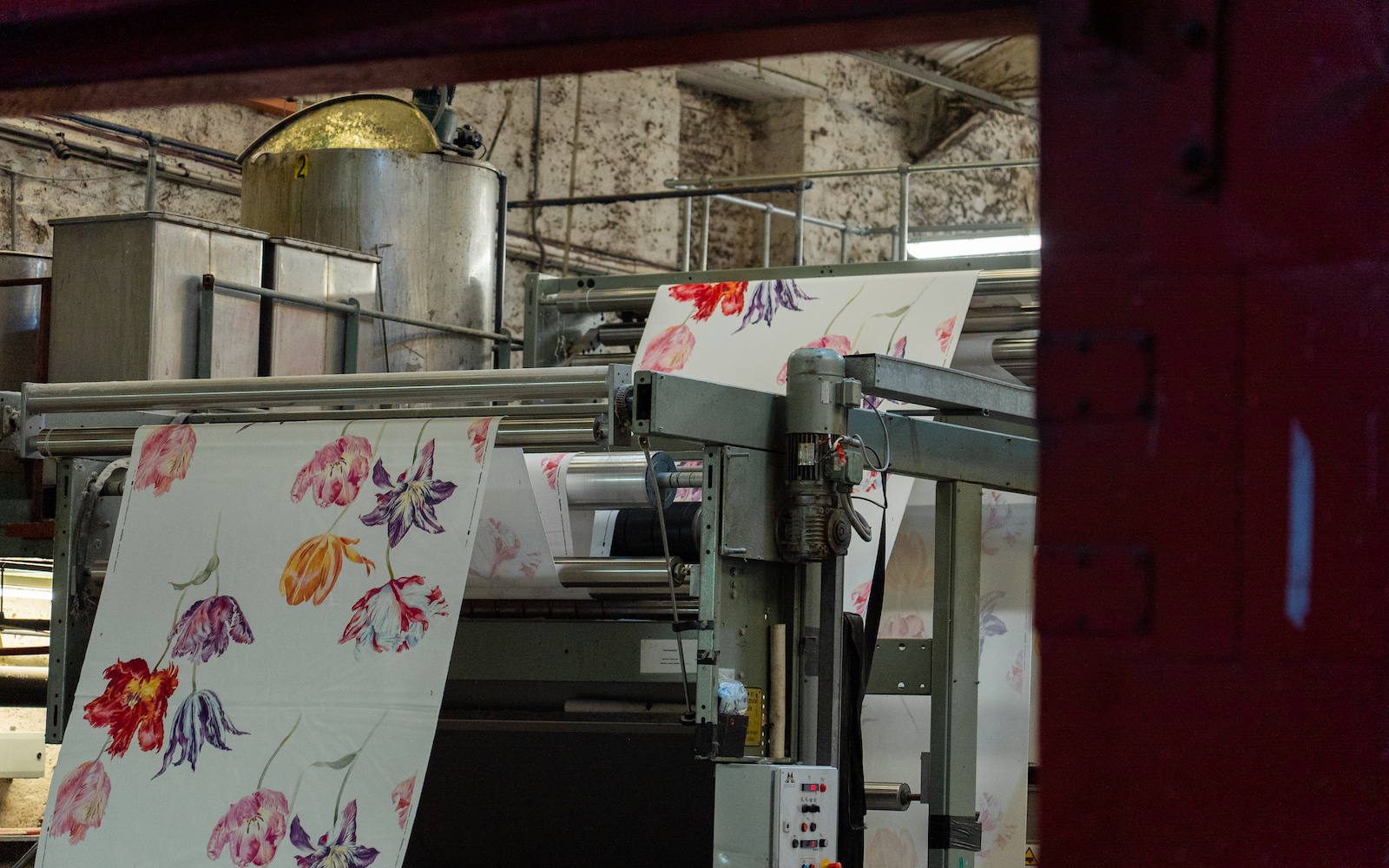
In Northwest of England – under the shadow of the Lake District – is a factory in Lancaster that is helping to keep British manufacturing alive. Standfast & Barracks’ role in British textile design is vast. It has been a creative force in fabric printing since 1923, and stands today as one of the few British factories. To stay ahead of the curve, to be able to print intricate designs for the brand, the building shelters cutting-edge technology and a team that is as passionate as it is skilled to push innovation in textile design into a new era. It is here where the printing for Sandserson Design Group takes place, which I am told makes up 70 per cent of the factory’s work.
Inside the walls, there’s a constant challenge (and threat) to find the balance to sensitively maintain its heritage, while also meeting modern demand as a business. And with Sanderson Design Group announcing that it will be a carbon-neutral business by 2030, the latest task has been to shift production into being clean, conscious and, too, carbon-neutral.
In order to understand how both businesses are collaborating with the aim to meet this end goal in less than eight years from now, we first have to understand the step-by-step, artistic process of textile printing.
After arrival, before the fabric comes into contact with dye, the cloth begins its preparation journey by being sewn into continuous sheets ready for processing using the plaiting machine.
The material then enters the singer machine, which burns off any loose fibres from the surface. During this process, the starch used for weaving is broken down with an enzyme. It is then rotated for no less than 16 hours to continue breaking down the ‘size’ (starch).
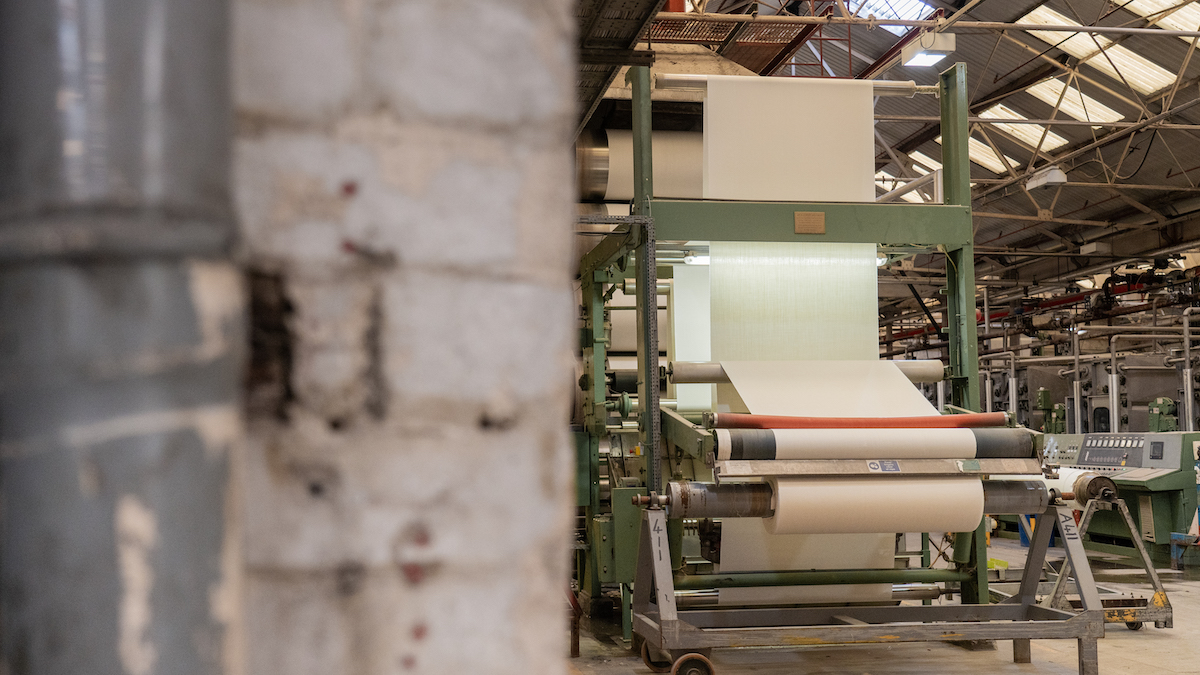
Image credit: Standfast & Barracks
Mercerising is an essential process used for cottons, which swells the fabric fibres and enhances the lustre that helps with colour yield. The fabric is then stretched, as it shrinks in the wet processes, which is the final preparation procedure before printing occurs.
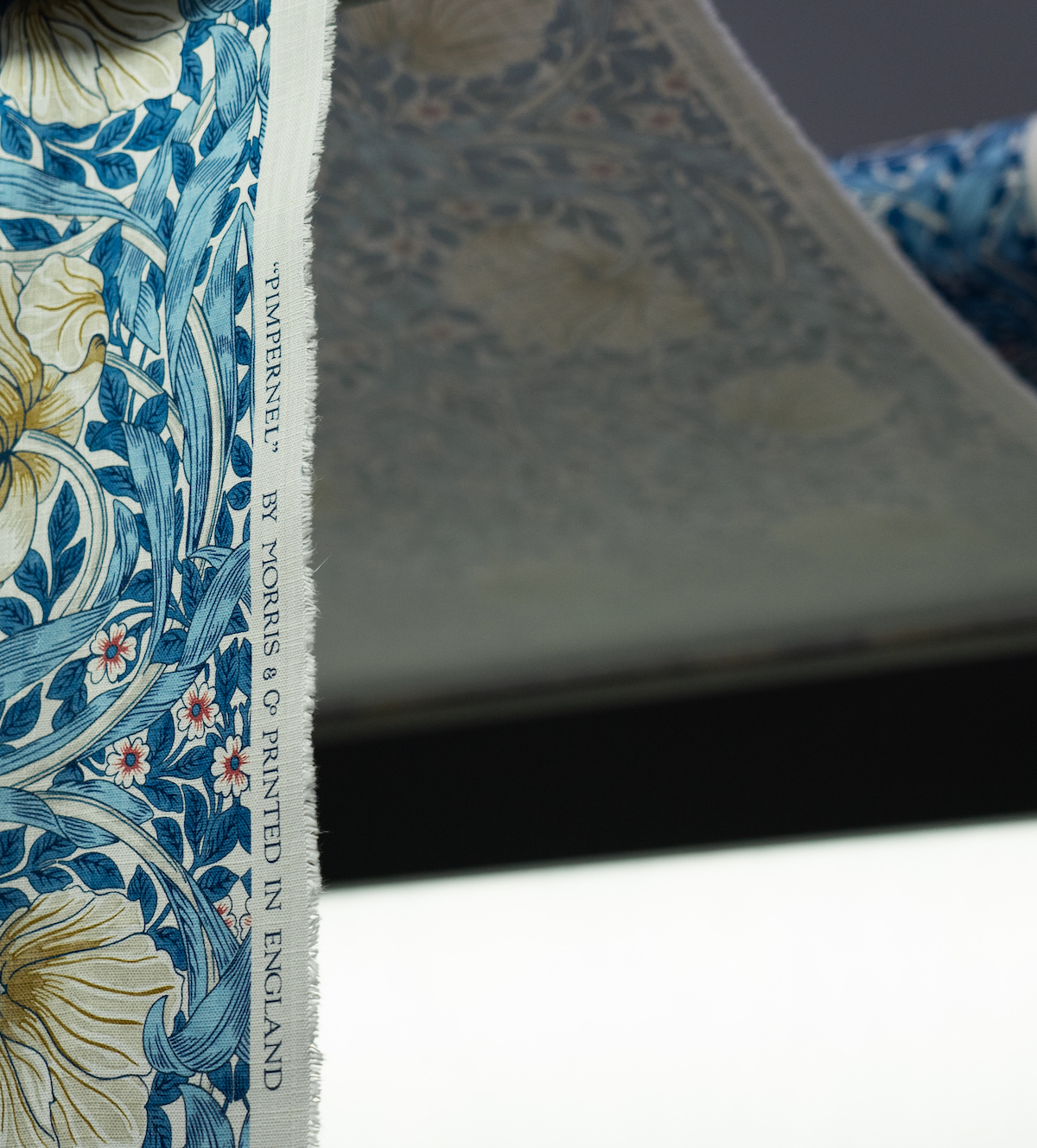
Image credit: Standfast & Barracks
The cloth then enters the dyehouse, where there are a few different methods of printing, depending on client demand. The factory has six Jig Dyers, one pad-batch dyer, which is known as the ‘Padder’ and a small laboratory where tests can be carried out efficiently.
The Jigs and Padder machines prepare the base cloths for printing, and each fabric has a standard shade that the team’s colourist checks against for continuity.
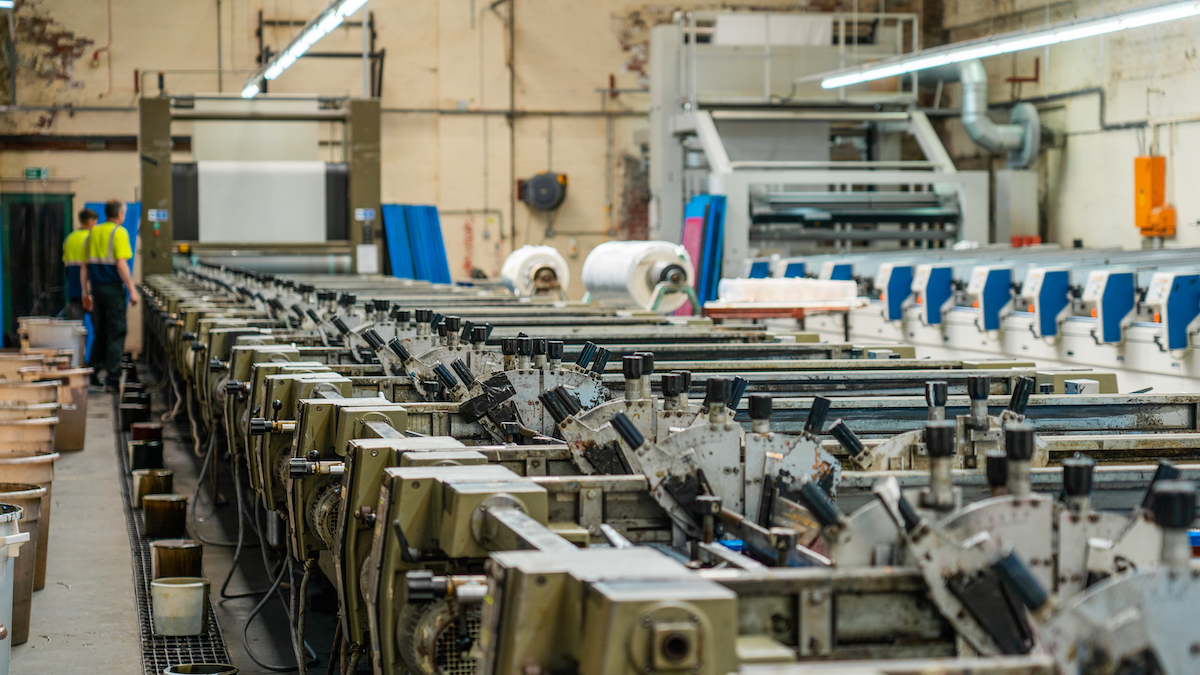
Image credit: Standfast & Barracks
Flatbed printing
Using the flatbed printing method, up to 24 colours can be used on one design, using up to 24 screens to print a full design onto fabric (each screen is used to print a different colour onto the fabric). Despite this being a long and labour-intensive process, this, I am told, is the best method of printing on the fabric in order to achieve the crispest line quality and sharpest detail. Due to the time and resources needed, the factory’s minimum order for flatbed printing in 200 metres per colourway.
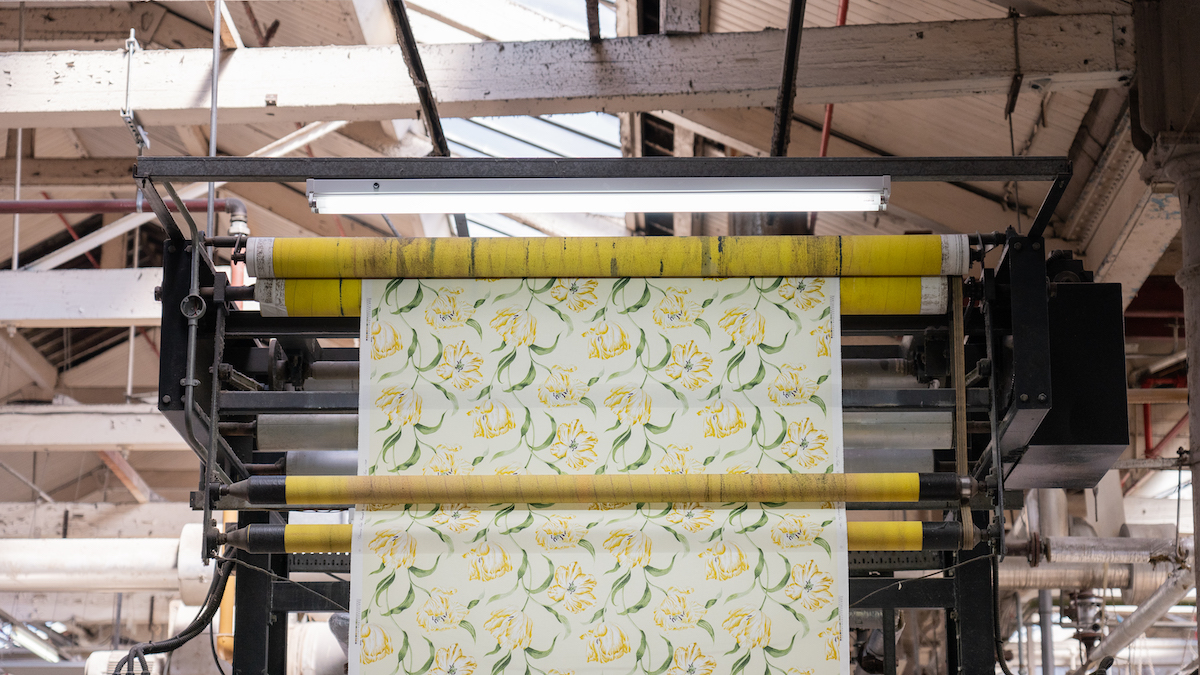
Image credit: Standfast & Barracks
Rotary printing
With a rotary printer, the design is applied using cylindrical metal screens which are engraved using a laser.
The latest rotary printing machines can produce accurately fine detail and closer fitting prints; they’re very accurate, and ideal for small apparel prints. Limited to a maximum of 20 colours using this method, the factory’s minimum order for flatbed printing is 300 metres per colourway.
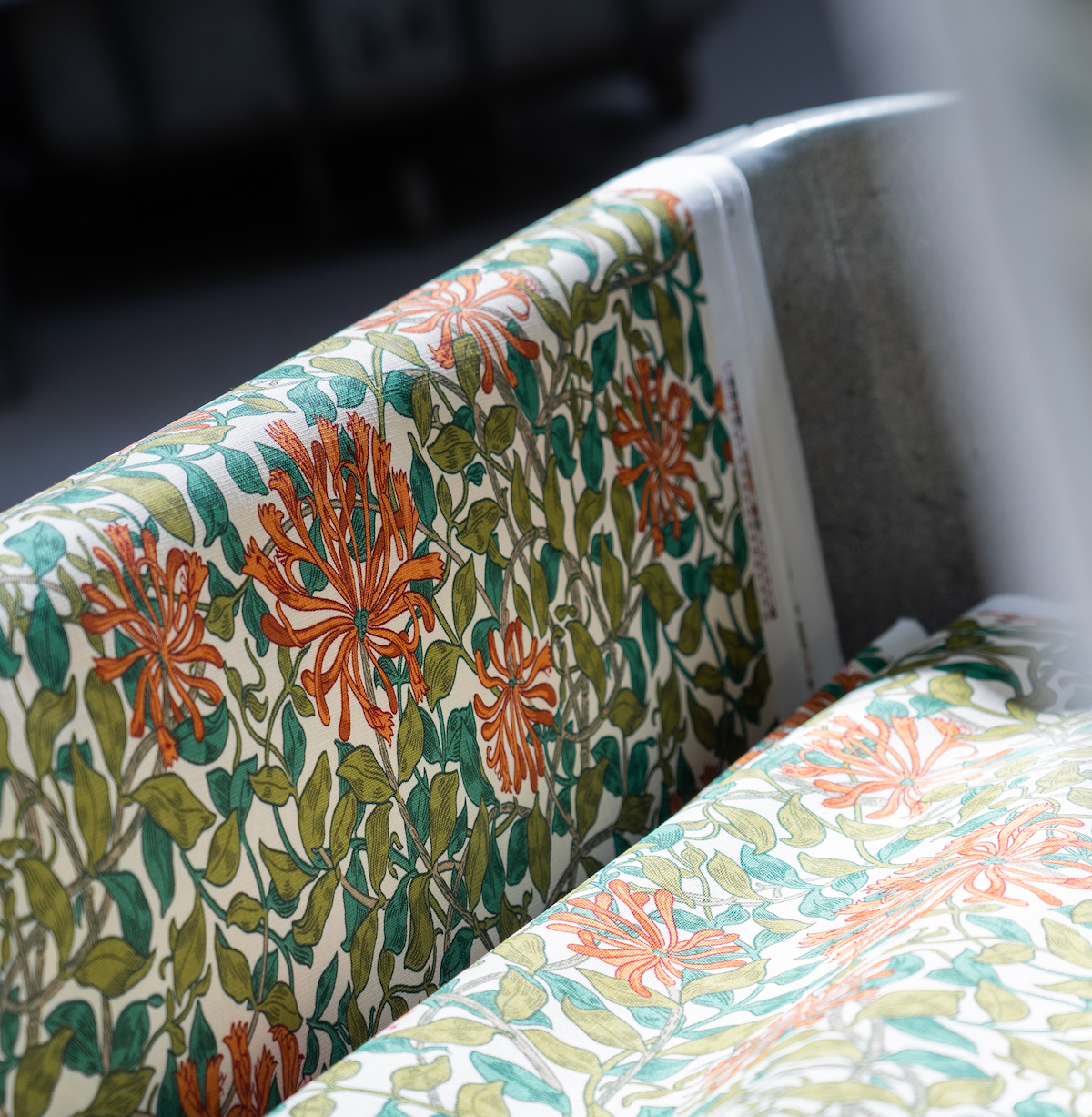
Image credit: Standfast & Barracks
Digital printing
The latest method of printing, constantly evolving part of the factory, is digital printing, which is where the answer lies for the factory – and Sanderson Design Group – in achieving their combined carbon-neutral goals, without compromising on quality.
The new EcoFast production process, which uses from 30-80 litres less water per metre than conventional printing, provides high-performance fabrics with both indoor and outdoor use. Due to the nature of the technology, this method enables multiple colourations to be developed and taigled for all markets and design specifications.
The factory has engineered several durable polyester-base options. These are suitable for outdoor use, with comprehensive list of performance related features, including printing with high definition durst greentex inks and a fluorocarbon finish, which makes it stain-resistant. What’s more, the process requires a minimum order of just 100 metres per SKU.
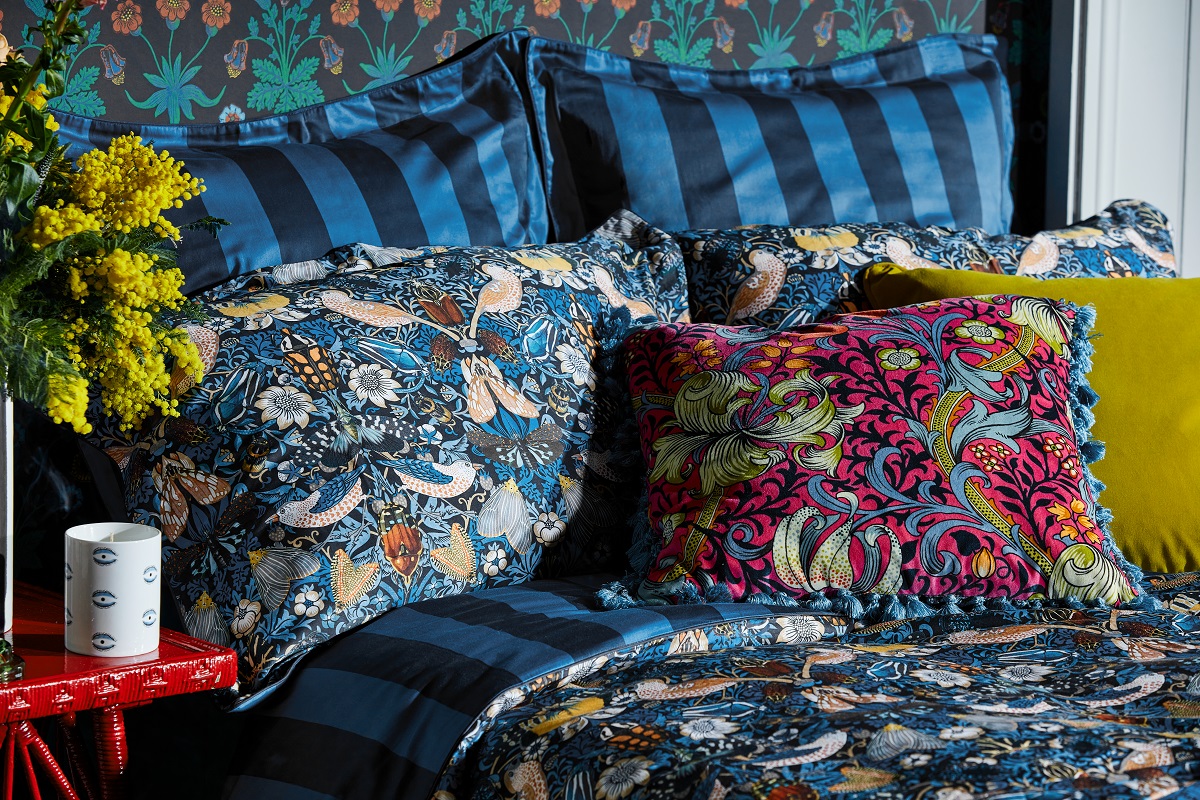
Image credit: Sanderson Design Group
So what’s next? In order to understand exactly how Sanderson Design Group and Standfast Barracks are going to achieve NetZeroby30, we sat down with Lisa Montague, CEO, Sanderson Design Group. “We have made certain assumptions and some advances past the initial five years are hard to predict, such as how hydrogen will be adopted, Lisa Montague, CEO, Sanderson Design Group, told Hotel Designs. “Our Live Beautiful program has 2 big pledges, to be Zeroby30 and to be the Employer of Choice in our industry. Both are very ambitious!”
“The first challenge is that we are not a green industry,” adds Montague. “We work with dyes, solvents and chemicals that require a lot of energy in production. There are many ways to reduce our impact and we are confident to reach net zero in scopes one and two with a 50 per cent reduction aim in scope three.”
I’m told that the focus in 2022 has been to design in longevity and deeply explore product lifecycle with a project group set up to work from all aspects. “As you will have seen at Standfast, base materials and print processes are already working at the forefront of the most ecological solutions available to deliver the product that is desired,” explains Montague. “Afterlife has not yet been a focus of ours, and this is an opportunity to reduce waste and make the products the most sustainable they can be. Packaging was changed a couple of years ago, moving away from plastics to sugar-cane wrapping. Sample books have been reduced by more than half across the business with digital design books introduced and physical books made to order. Supplier audits have been introduced and there is great opportunity to work more closely with all third-party partners as we emerge from the pandemic and find a new equilibrium.”
“My ambition, 10 years from now, is to be a hub of creative talent, the destination for beautiful home interiors, at home and abroad, as a trusted business partner to architects, designers, and retailers, and a reliable resource for inspiring fabrics, wallpapers and bespoke objects that compliment and bring beauty to a room.” – Lisa Montague, CEO, Sanderson Design Group.
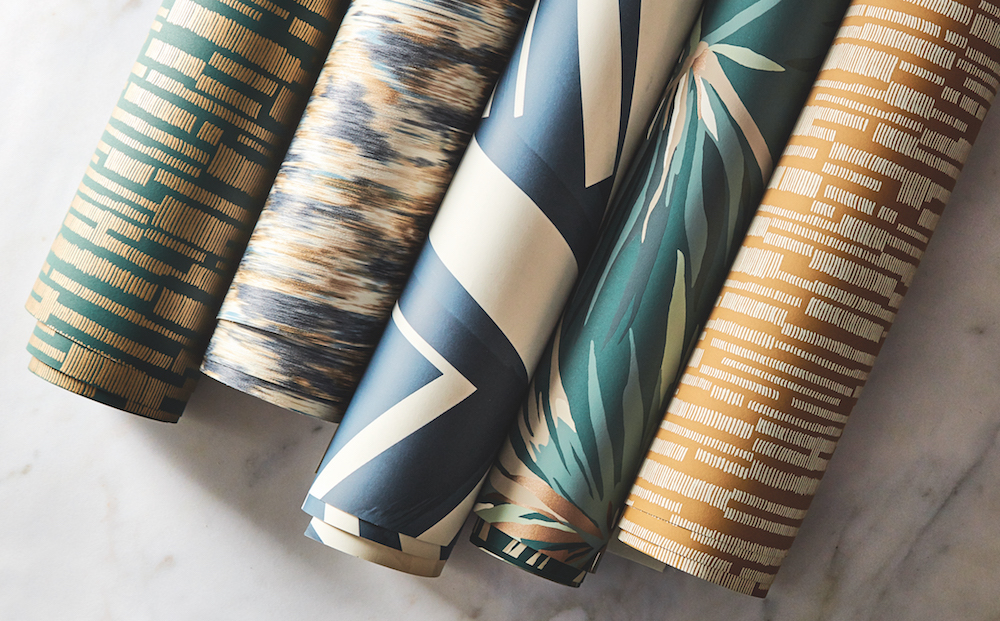
Image credit: Harlequin/Sanderson Design Group
Sanderson Design Group is well on its way to achieving its ambitious goal. The latest milestone reached has been receiving the fourth annual certification from Planet Mark. Without taking the significance away from long-standing brands that are striving to become net-zero, in the process, there is the unavoidable challenge of maintaining a legacy while also ensuring that it is a team effort across all areas of the business. “With regards to people,” Montague says, “we have worked intensively on culture and community over the past few years, especially these past two years when facing the Covid-19 crisis, when keeping in touch with our workforce in various parts of the UK and some in other countries, was vital. We have significantly upped internal communication, and I am continuing my weekly newsletter post pandemic, to maintain that connection. Community groups in each site have been re-formed and interlink with the Live Beautiful groups to develop both group wide and local initiatives to support the work streams (100 in total with priority 20).
With so much emphasis on the brand’s eco credentials – and plans to achieve ambitious goals in the process – it’s all too easy to loose sight on the creative opportunities that these changes to production have made. “Our vision is to bring the beautiful into peoples’ homes and lives,” concludes Montague. “My ambition, 10 years from now, is to be a hub of creative talent, the destination for beautiful home interiors, at home and abroad, as a trusted business partner to architects, designers, and retailers, and a reliable resource for inspiring fabrics, wallpapers and bespoke objects that compliment and bring beauty to a room.” And having seen what I have seen at the Standfast & Barracks factory, and the collaborative nature in which both companies are evolving with meaning, I would say that Montague’s objectives are in reach.
Sanderson Design Group is one of our Recommended Suppliers and regularly features in our Supplier News section of the website. If you are interested in becoming one of our Recommended Suppliers, please email Katy Phillips.
Main image credit: Standfast & Barracks





